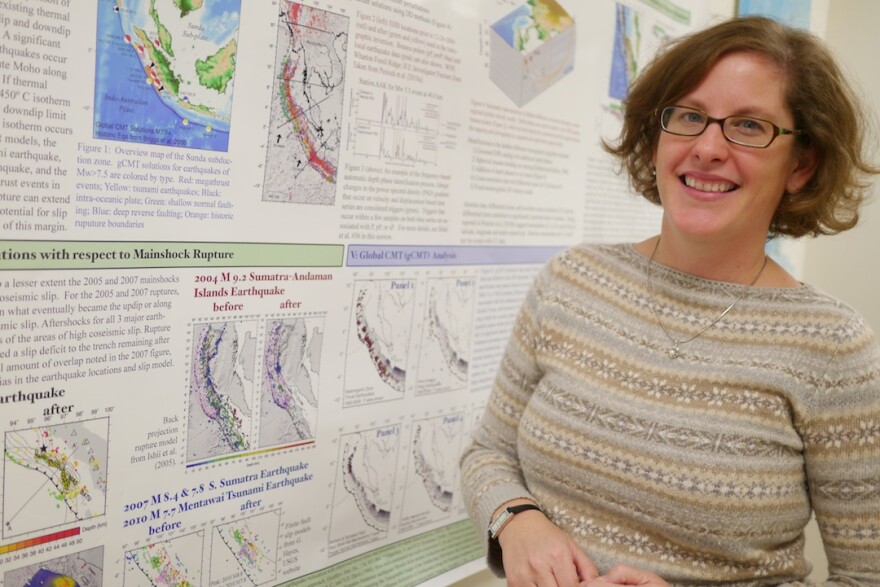The Railroad Commission of Texas has announced plans to hold a town hall meeting next week about the swarm of minor earthquakes in the Azle-Reno area.
But for now, residents might be reassured to know that geophysicists have placed a handful of small blue boxes, called NetQuake stations, inside homes, garages or schools along the Parker-Wise-Tarrant county line. The public can visit here to see ground movement in real time.
Data is recorded in real time, every hour, using wireless networks, the stations ping the information to the U.S. Geological Survey. SMU seismologist Heather DeShon is leading the team that will analyze the data.
“Well, our first goal is to just provide better earthquake locations for the local population.”
The stations will be active for at least six months, and maybe longer if the quakes continue.
“Once we know where the earthquakes are occurring, we can figure out the mechanism of the earthquake,” DeShon says. “If they’re associated with a fault, how big an earthquake might we expect in the future? And whether or not the seismicity is migrating spatially.”
In other words, are the quakes spreading? More advanced instruments, called Broadband seismic stations, will be placed in the Azle-Reno area in the coming weeks. And because so many earthquakes have been reported since November, at least 30, Texas Railroad Commissioner David Porter will host a town hall meeting next Thursday evening at the Azle high school auditorium.
In the meantime, Don Blakeman with the USGS National Earthquake Information Center, says the swarm of minor earthquakes are likely not going to get bigger.
“Whether these are induced or natural,” he says, “Probably they will stay small. Famous last words! [But] I can’t guarantee that.”
What people need to remember, DeShon points out, is: “Our continent is a combination of rocks that have experienced faulting, or rocks sliding past each other, over billions of years, so what is now Texas may have been a plate boundary. Those old faults are down there. We’d hope they’d stay in active, but?”
She and her team hope to find out if these quakes are related to movement of rocks along an old fault line or a new fracture caused by something else.


